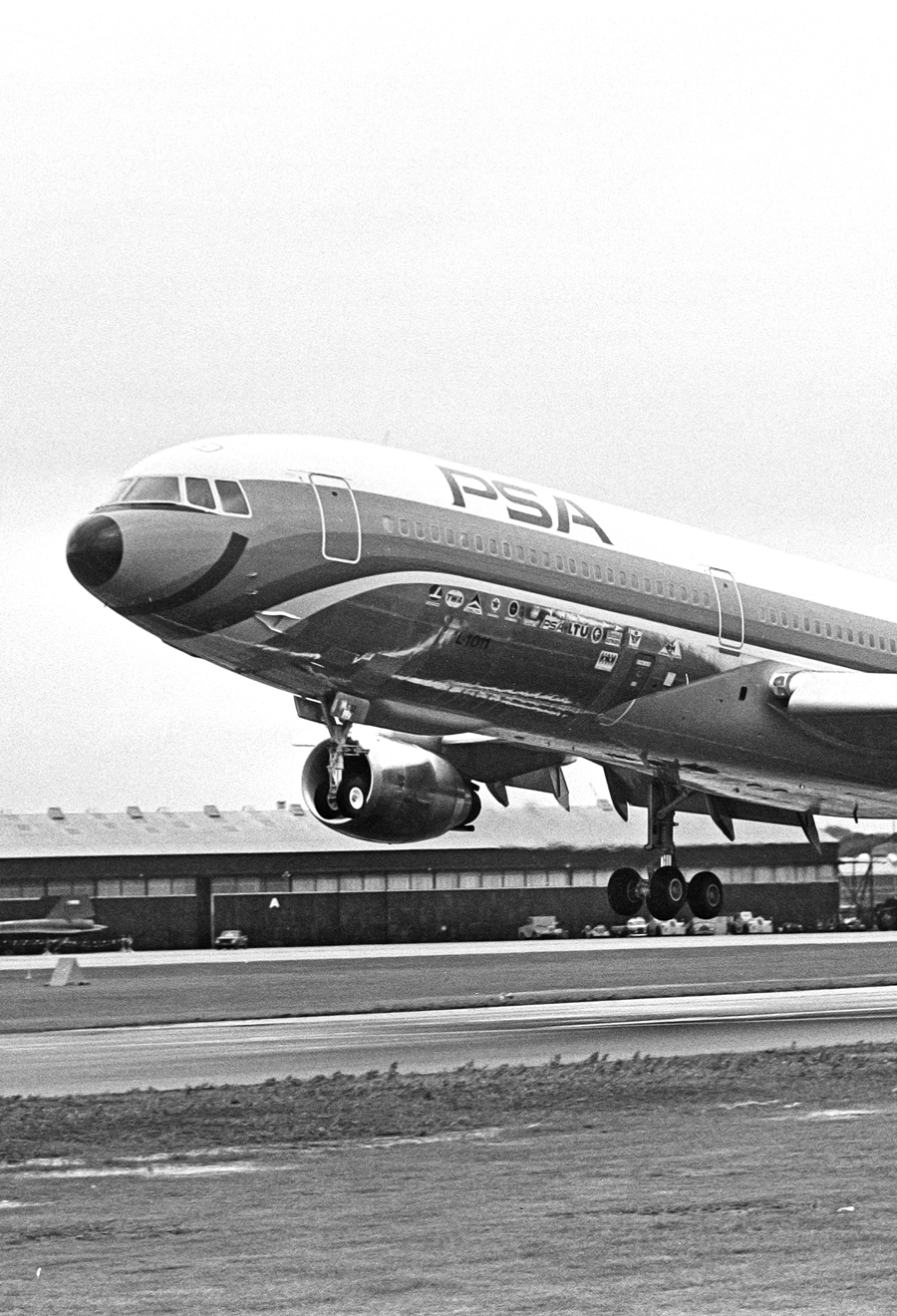The U.S. airline industry is more consolidated than ever before. The so-called “Big Four” airlines — American, Delta, Southwest, and United — now control nearly three-quarters of the U.S. market. But that wasn’t always the case. After the federal government deregulated airlines in 1978, a rainbow of airplane tail colors could be seen at airports across the country. Over the years, many of these airlines merged with larger carriers, while over 100 airlines went bankrupt. Take a trip down memory lane and learn more about 20 defunct U.S. airlines you might remember flying at some point.
National Airlines

National Airlines, a major carrier of the regulated era, commenced operations in 1934 with an airmail route from Daytona Beach to St. Petersburg, Florida. It moved its headquarters from St. Petersburg to Miami in 1940, and introduced a passenger fleet of Lockheed Model 18 Lodestar aircraft on routes from Florida to New Orleans, New York City, and other major cities throughout the East Coast.
National called itself the “Airline of the Stars” and began flights to the West Coast on Douglas DC-8s in the early 1960s. The following decade, the airline introduced service from Miami to London and other cities in Europe. By the end of the 1970s, however, National faced several takeover bids and was ultimately acquired by Pan Am in 1980.
Braniff International Airways

Before deregulation, the federal government set airfares and decided which airlines were allowed to fly which routes. When deregulation went into effect in 1978, a wave of new carriers cropped up, eager to attract new customers to the skies with low fares. Not all of the existing carriers could easily adapt to the new competitive environment — along with the surging fuel prices and economic pressures of the era — and Braniff International Airways was one of the first major casualties.
The airline was founded in 1928 but ceased operations in 1982. A second iteration of the airline, formed partly from the assets of the original, flew from 1984 to 1989, and today the brand lives through retail and licensing agreements. At the time it went out of business, the original Braniff had a fleet of over 100 aircraft. The airline’s largest hub was at Dallas/Fort Worth International Airport — today one of the busiest airports in the world — and it had a major presence in the southwestern U.S., the Midwest, and Latin America.
Pacific Southwest Airlines
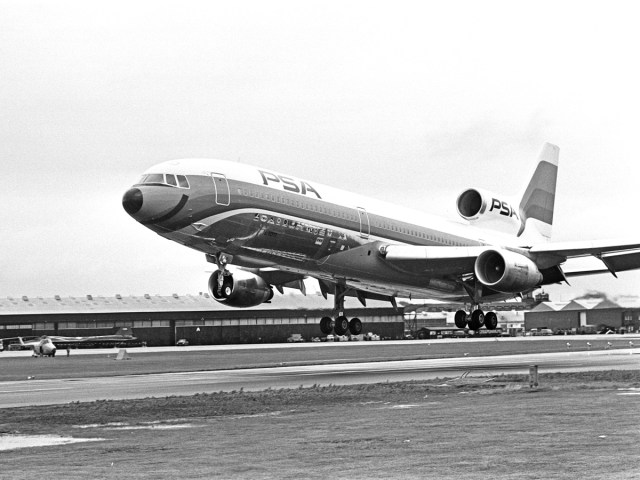
Pacific Southwest Airlines, better known as PSA, was one of the earliest pioneers of low-cost travel, inspiring future carriers like Southwest Airlines. Billing itself as the “World’s Friendliest Airline” and painting a smile on the nose of its aircraft, PSA began service in 1949 with a single leased Douglas DC-3.
During the regulated era, PSA became one of the dominant intrastate airlines in California, alongside AirCal, which was acquired by American Airlines in 1987. PSA was headquartered in San Diego, with additional hubs in Los Angeles and San Francisco. US Air acquired PSA in 1987, and the airline flew its final flight in 1988.
Eastern Airlines

Eastern was founded in 1926, and like many airlines of that era, began by transporting airmail. During the following decades, Eastern became one of the “Big Four” airlines of the regulated era in U.S. aviation. The airline dominated the Florida-to-New York market during this time and was also the first to introduce shuttle service between Boston, New York, and Washington, D.C.
In the 1980s, the airline struggled with high costs and labor disputes, ending in liquidation in 1991. American Airlines acquired Eastern’s former operation at Miami, which is now one of American’s largest hubs, and Delta acquired many of Eastern’s assets at Atlanta International Airport.
Pan American Airways

Pan American Airways — better known as Pan Am — was founded in 1927 and started flying its famous long-range flying boats called “Clippers” in the 1930s. In 1955, Pan Am was the launch customer for the Boeing 707, one of the world’s first passenger jets. The following decade, the airline introduced the Boeing 747 jumbo jet into service, which it used to establish a global route network and become America’s unofficial flag carrier.
During this time, the Pan Am brand became synonymous with the “golden age” of aviation, but like many legacy carriers, it struggled after deregulation, gradually selling off key assets — like its transpacific route network to United Airlines — before declaring bankruptcy in 1991. The brand lives on, however, through licensing agreements, and is even set to take to the skies again in 2025 for special charter flights.
Western Airlines
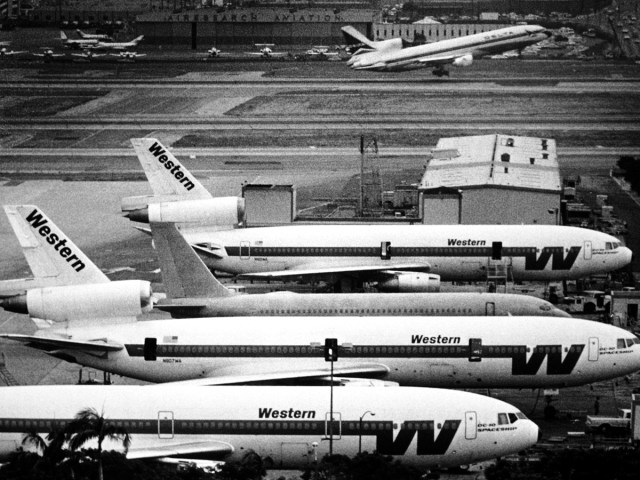
Western Airlines was established as airmail carrier Western Air Express in 1925. When Western merged with Delta Air Lines in 1987, it was the oldest continuously operating U.S. airline at the time. Through a major expansion in the 1940s, Western established a significant footprint in the western U.S., with hubs in Salt Lake City and Los Angeles. The airline introduced passenger jets with the Boeing 707 in 1960 and the Boeing 737 in 1968.
Throughout its six-decade history, Western was known for its service innovations, including becoming the first airline to introduce complimentary in-flight Champagne in 1954, and its longtime slogan: “Western Airlines… The Only Way To Fly!” After a failed merger with Continental in 1978, Western was finally acquired by Delta in 1987.
Trans World Airlines
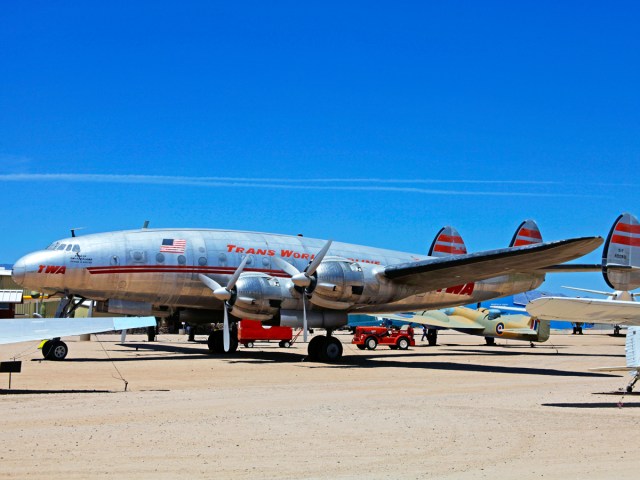
Along with Pan Am, Trans World Airlines — better known simply as “TWA” — was one of the iconic airlines of aviation’s golden age. In the 1930s, TWA was controlled by pioneering aviator and business magnate Howard Hughes. The following decade, the airline launched transcontinental flights from New York to Los Angeles on Lockheed Constellations, with a scheduled flight time of over eight hours. The jet age at TWA kicked off in 1959 with the introduction of the Boeing 707, and Hughes left the airline the following year.
After deregulation, TWA acquired Ozark International Airlines and developed St. Louis into its primary hub, along with its existing transatlantic hub at New York’s JFK Airport (where there is now a TWA-themed hotel). But with continued financial struggles, the airline faced a takeover bid from investor Carl Icahn and later filed for bankruptcy twice in the 1990s. Eventually, TWA declared bankruptcy for a third and final time in 2001 and agreed to be acquired by American Airlines.
Northeast Airlines

Northeast Airlines flew for nearly four decades, from 1933 to 1972. The carrier began service under the name Boston-Maine Airways and was rebranded as Northeast Airlines in 1940. During the jet age, Northeast was the first to fly the Boeing 727-200 in 1967, and its planes became known as “Yellowbirds” thanks to the airline’s yellow-and-white livery.
Howard Hughes acquired a controlling stake in Northeast Airlines in 1962, but the airline was one of the smallest trunk carriers in the regulated era. During the 1960s, it faced continuous financial challenges and was eventually bought by Delta in 1972.
Republic Airlines

Republic Airlines was born in 1979 from the combination of North Central Airlines and Southern Airways (both founded in 1944). It was the first merger approved in the deregulated era. Republic was based at Minneapolis-St. Paul International Airport, with additional hubs in Detroit and Memphis, and operated the largest fleet of Douglas DC-9s in the world.
To expand the airline’s footprint in the West, Republic purchased Hughes AirWest in 1980, making it the largest U.S. airline at the time in terms of destinations served. In 1986, Northwest Airlines (then known as Northwest Orient) purchased Republic Airlines for $884 million, which was then the largest merger in U.S. aviation history. The Republic name lives on as Republic Airways, a regional carrier operating flights on behalf of American, Delta, and United.
Northwest Airlines

Northwest Airlines traces its roots to 1926 and was headquartered near the Twin Cities throughout its long history. After World War II, Northwest established itself as the dominant airline across the Pacific. It introduced separate branding under the Northwest Orient name and established a hub at Tokyo’s Narita International Airport to facilitate connections throughout Asia.
Following deregulation, Northwest merged with Republic Airlines in 1986, a move that increased its domestic market share through hubs in Detroit, Minneapolis/St. Paul, and Memphis. In 2010, Northwest merged with Delta Air Lines under the Delta brand, becoming the world’s largest airline at the time.
Piedmont Airlines

Piedmont Airlines was formed in 1940 in Winston-Salem, North Carolina, as Piedmont Aviation, an aircraft service business and pilot training school. The airline flew its first scheduled commercial flights between Wilmington, North Carolina, and Cincinnati, Ohio, in 1948, on Douglas DC-3s.
After deregulation, Piedmont grew quickly, establishing hubs in Charlotte, North Carolina; Dayton, Ohio; Baltimore, Maryland; and Syracuse, New York. By 1983, it was the 10th-largest airline in the U.S. by passengers carried. By the end of the decade, however, the Piedmont name no longer flew, as the carrier was acquired by US Air in 1989. Today, American Airlines has a regional subsidiary carrier called Piedmont Airlines, which was formerly known as Henson Airlines.
Continental Airlines
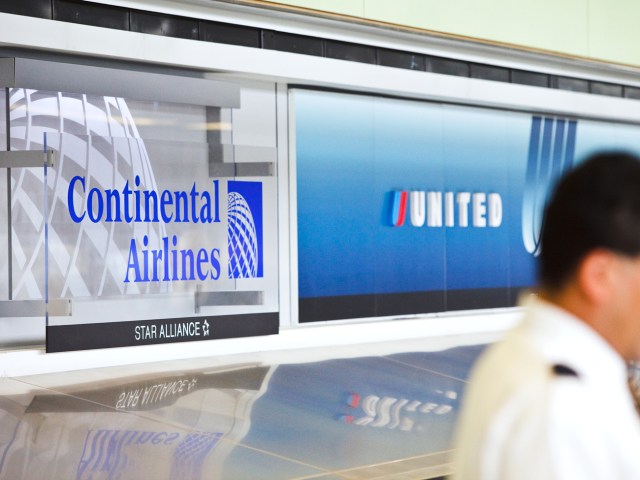
Continental traces its roots back to 1934. By the 1960s, the company, then headquartered in Los Angeles, was known for its elevated service offerings and a route network that extended into Asia and the South Pacific. However, like many other airlines at the time, Continental saw its finances decline in the 1970s and especially post-deregulation.
In 1981, Continental was acquired by Texas International Airlines, who chose to keep the Continental brand and move the airline’s headquarters to Houston. The combined airline expanded its route map and grew into one of the country’s largest carriers. It merged in 2012 with United Airlines, and the Continental brand flew into the sunset.
People Express
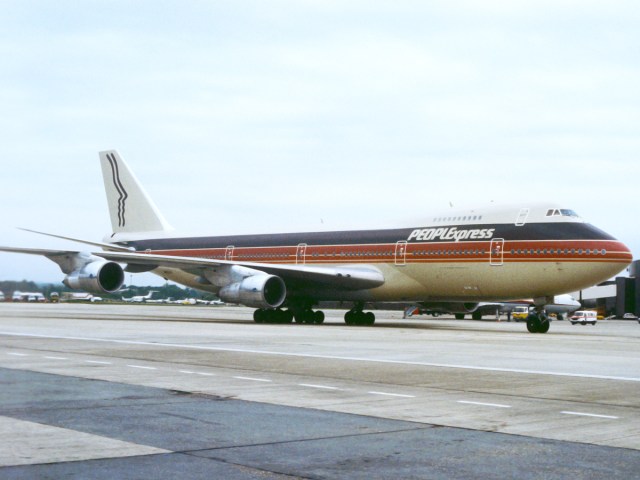
People Express started in 1981 as a low-cost carrier in a newly deregulated environment. The airline was based at Newark Liberty International Airport, near New York City, and also operated hubs in Baltimore and Denver after purchasing rival Frontier Airlines (a different airline than the ultra-low-cost carrier flying today). People Express launched Newark-to-London flights in 1983 on Boeing 747s, offering unheard-of fares as low as $149.
The experiment, while popular, was short-lived. After piling up debt, the airline was forced to merge with Continental Airlines in 1987, giving Continental its major Newark operation that remains an important transatlantic hub for United Airlines today.
Midwest Express
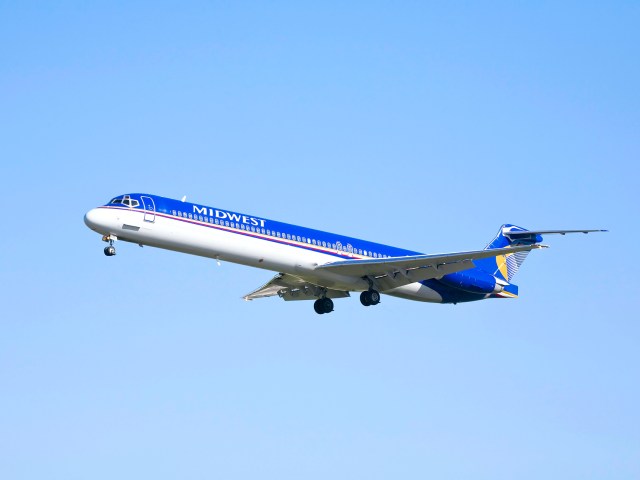
Midwest Express (later Midwest Airlines) was a beloved regional carrier headquartered in Wisconsin, known for its slogan “The Best Care in the Air.” The airline fitted its fleet with plush, roomy leather seats and offered all passengers complimentary meals, including warm chocolate chip cookies. Its primary hub was Milwaukee, with additional bases in Omaha and Kansas City. Following the 9/11 attacks, Midwest Airlines struggled to recover financially and eventually merged with low-cost carrier Frontier Airlines under the latter’s name in 2010.
US Air
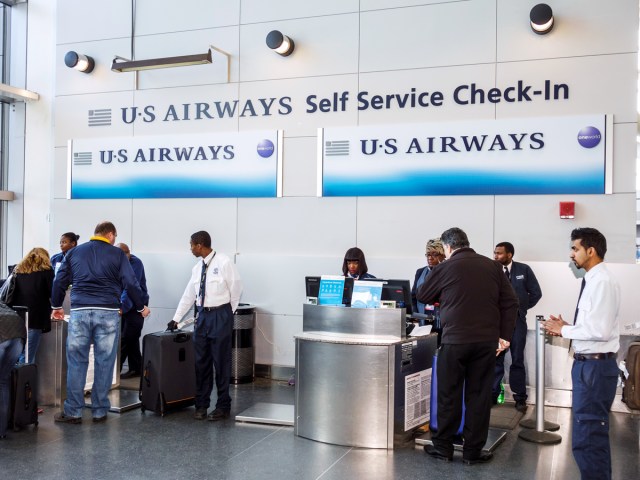
US Air (which later rebranded as US Airways) began as a carrier called All American Airways, which was founded in 1939 and later became Allegheny Airlines. In the 1960s and 1970s, Allegheny grew into one of the largest airlines in the northeastern United States, changing its name to US Air in 1979.
In the 1980s, the airline grew its domestic footprint significantly through mergers with San Diego-based PSA in 1986 and North Carolina-based Piedmont Airlines in 1987. During this time, US Air developed major hubs in Philadelphia, Pittsburgh, Charlotte, and Washington, D.C.’s Reagan National Airport. In 2005, US Airways merged once again with Arizona-based America West Airlines. Finally, American Airlines merged with US Airways in 2013 to create the world’s largest airline. The US Airways brand hasn’t flown the skies since.
AirTran Airways

Low-cost carrier AirTran Airways got its start in 1993 under a much different name: Conquest Sun Airlines. Shortly afterward, AirTran Corporation acquired the airline and renamed it AirTran Airways. The airline merged with ValuJet Airlines in 1997, with AirTran chosen as the surviving brand name in an effort to distance the airline from ValuJet’s poor safety record.
In 1999, AirTran became the launch customer and eventually the largest operator of the Boeing 717 twin-engine aircraft (which was developed as the MD-95 before Boeing acquired McDonnell Douglas). With hubs in Atlanta, Baltimore, Milwaukee, and Orlando, the airline served over 70 cities in the U.S., Mexico, and the Caribbean by the time it was acquired by Southwest Airlines and operated its last revenue flight as AirTran in 2014.
Reno Air
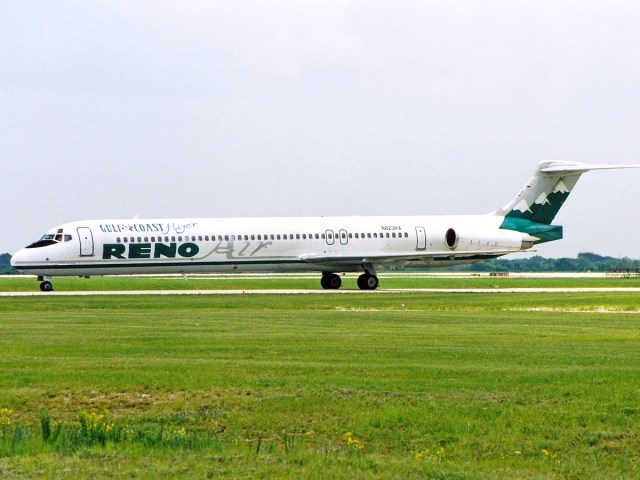
Reno Air was short-lived, but during its seven years of existence, the small airline certainly made a splash. With a fleet of McDonnell Douglas MD-80s, Reno Air commenced operations in 1992 with flights from its home base in Reno to Seattle, quickly expanding its route network throughout the West and opening a second hub at San Jose’s Mineta International Airport in the Bay Area. Taking a cue from its hometown’s motto, Reno Air called itself “The Biggest Little Airline in the World.” In 1999, American Airlines acquired Reno Air to expand its West Coast presence.
Aloha Airlines
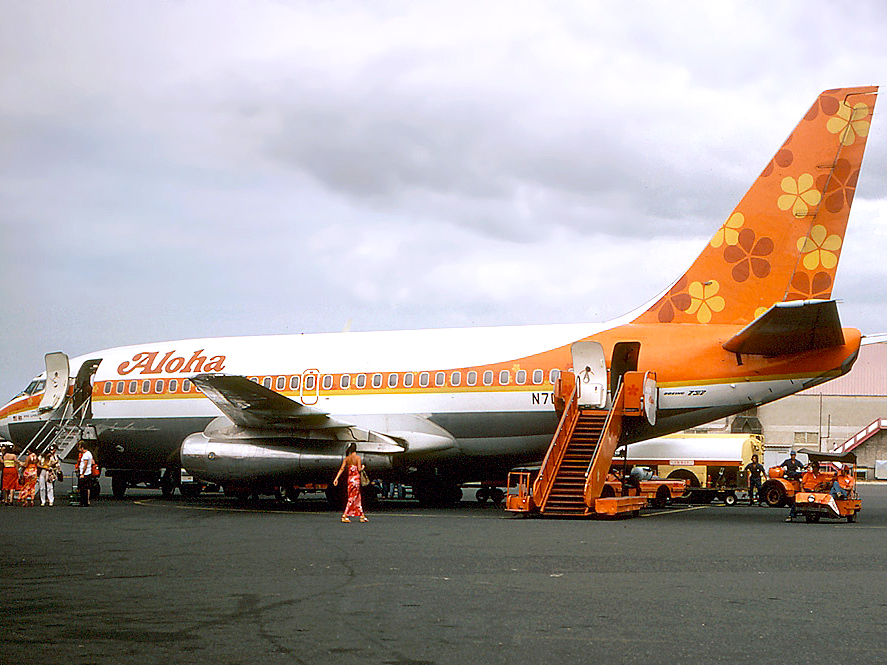
Aloha Airlines traces its roots to Trans-Pacific Airways, which first took to the skies in 1946, before Hawaii was even a state. Adopting the Aloha Airlines name in 1958, it was a dominant carrier in intrastate Hawaii travel for many decades, along with Hawaiian Airlines. Aloha began service from Hawaii to the mainland in 2000, but it faced an uphill battle: Economic challenges and a costly fare war ultimately led to the airline’s demise in 2008.
ATA Airlines

The 1960s and 1970s saw the proliferation of air travel clubs, which were private clubs that ran trips for their members. Indianapolis-based ATA (formerly known as American Trans Air) started flying Boeing 720s for Ambassador Travel Club in 1973. In 1981, ATA began operating charter flights, with an emphasis on transporting military service members. During the Gulf War in 1991, ATA transported 108,000 military personnel on 494 missions to the Persian Gulf.
Throughout the 1990s, the airline grew its leisure travel hub at Chicago Midway International with charter flights to Hawaii, Mexico, and the Caribbean. In 2000, ATA began regularly scheduled flights, but the airline struggled financially in the wake of the 9/11 terrorist attacks and declared bankruptcy in 2004 and again in 2008. ATA’s final flight was from Honolulu to Phoenix on April 3, 2008. Southwest Airlines acquired many of the airline’s assets, particularly at Chicago Midway.
Virgin America
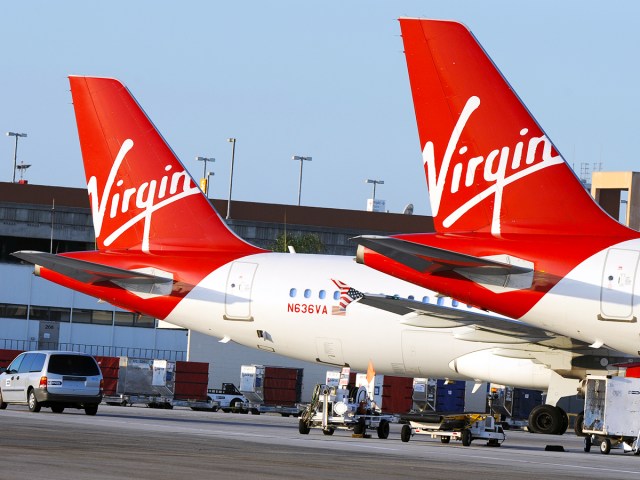
The most recently defunct airline on this list is Virgin America, which first flew in 2007. The airline licensed the iconic brand and logo from Sir Richard Branson’s Virgin Group (which also flies British airline Virgin Atlantic Airways), aiming to revolutionize domestic U.S. air travel with better in-flight service and hip branding. For example, it became the first U.S. airline to introduce mood lighting onboard its aircraft. The airline had hubs in Los Angeles and San Francisco, but it was short-lived — Seattle-based Alaska Airlines acquired Virgin America in 2016.
Editor’s note: This article has been updated and expanded from its original version.
More from our network
Daily Passport is part of Inbox Studio, which publishes content that uplifts, informs, and inspires.






